Get recommended reads, deals, and more from Hachette
By clicking ‘Sign Up,’ I acknowledge that I have read and agree to Hachette Book Group’s Privacy Policy and Terms of Use

Site Preferences
Sign up for our newsletter to get 15% off sitewide!
Rick Steves Budapest
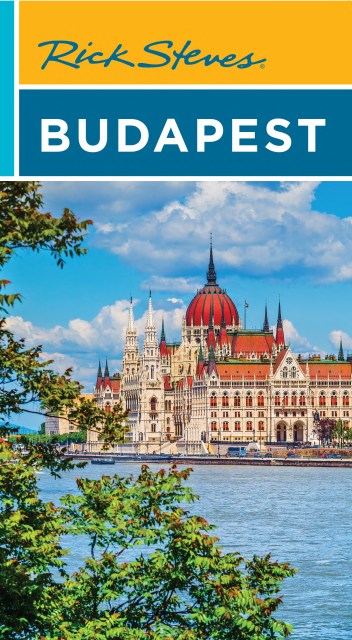
Contributors
By Rick Steves
By Cameron Hewitt
Formats and Prices
- Trade Paperback
- ebook $16.99 $21.99 CAD
- Trade Paperback $22.99 $28.99 CAD
This item is a preorder. Your payment method will be charged immediately, and the product is expected to ship on or around November 21, 2023. This date is subject to change due to shipping delays beyond our control.
Also available from:
- Apple Books
- Barnes & Noble
- Google Play
Description
Now more than ever, you can count on Rick Steves to tell you what you really need to know when traveling through Budapest. Admire opulent Golden Age architecture, soak in a thermal bath, and wander the winding streets of old villages: with Rick Steves, Budapest is yours to discover! Inside Rick Steves Budapest you’ll find:
- Fully updated comprehensive coverage of Budapest, as well as day trips to Gödöllö Palace, Lázár Lovaspark, Holókö, the Danube Bend, Szentendre, Visegrád, Esztergom, and more
- Rick’s strategic advice on how to get the most out of your time and money, with rankings of his must-see favorites
- Top sights and hidden gems, from the ornate Parliament building and the Széchnyi Baths to local unicum distilleries (Hungary’s favorite spirit!)
- How to connect with local culture: Catch a world-class opera performance, dive into a bowl of goulash, or sample paprika at the Great Market Hall
- Beat the crowds, skip the lines, and avoid tourist traps with Rick’s candid, humorous insight
- The best places to eat, sleep, and relax with a glass of pálinka
- Self-guided walking tours of lively neighborhoods and historic museums
- Detailed neighborhood maps for exploring on the go
- Useful resources including a packing list, a Hungarian phrase book, a historical overview, and recommended reading
- Over 500 bible-thin pages include everything worth seeing without weighing you down
Make the most of every day and every dollar with Rick Steves Budapest .
Expanding your trip? Try Rick Steves Eastern Europe .
"The country's foremost expert in European travel for Americans."
"Steves is an absolute master at unlocking the hidden gems of the world's greatest cities, towns, and monuments."
“Every country-specific travel guidebook from the Rick Steves publishing empire can be counted upon for clear organization, specificity and timeliness."
"Pick the best accommodations and restaurants from Rick Steves…and a traveler searching for good values will seldom go wrong or be blindsided."
"His guidebooks are approachable, silly, and even subtly provocative in their insistence that Americans show respect for the people and places they are visiting and not the other way around."
"Travel, to Steves, is not some frivolous luxury—it is an engine for improving humankind, for connecting people and removing their prejudices, for knocking distant cultures together to make unlikely sparks of joy and insight. Given that millions of people have encountered the work of Steves over the last 40 years, on TV or online or in his guidebooks, and that they have carried those lessons to untold other millions of people, it is fair to say that his life’s work has had a real effect on the collective life of our planet."
"[Rick Steves] laces his guides with short and vivid histories and a scholar's appreciation for Renaissance art yet knows the best place to start an early tapas crawl in Madrid if you have kids. His clear, hand-drawn maps are Pentagon-worthy; his hints about how to go directly to the best stuff at the Uffizi, avoid the crowds at Versailles and save money everywhere are guilt-free."
"Steves is a walking, talking European encyclopedia who yearns to inspire Americans to venture 'beyond Orlando.'"
“…he’s become the unofficial guide for entire generations of North American travelers, beloved for his earnest attitude and dad jeans."
You May Also Like
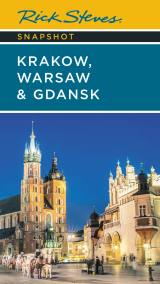
Newsletter Signup

Rick Steves
About the author.
Since 1973, Rick Steves has spent about four months a year exploring Europe. His mission: to empower Americans to have European trips that are fun, affordable, and culturally broadening. Rick produces a best-selling guidebook series, a public television series, and a public radio show, and organizes small-group tours that take over 30,000 travelers to Europe annually. He does all of this with the help of more than 100 well-traveled staff members at Rick Steves’ Europe in Edmonds, WA (near Seattle). When not on the road, Rick is active in his church and with advocacy groups focused on economic and social justice, drug policy reform, and ending hunger. To recharge, Rick plays piano, relaxes at his family cabin in the Cascade Mountains, and spends time with his son Andy and daughter Jackie. Find out more about Rick at http://www.ricksteves.com and on Facebook.
Learn more about this author

Cameron Hewitt
Born in Denver and raised in central Ohio, Cameron Hewitt settled in Seattle in 2000. Ever since, he has spent three months each year in Europe, contributing to guidebooks, tours, radio and television shows, and other media for Rick Steves’ Europe, where he serves as content manager. Cameron married his high school sweetheart (and favorite travel partner), Shawna, and enjoys taking pictures, trying new restaurants, and planning his next trip.
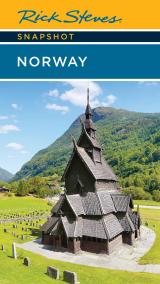
- Smaller Text Larger Text
- Home /
- Blog: Cameron's Travels
Destination: Budapest
Europe’s best neighborhoods: where should i stay in ___.
You’re heading to Europe. You’ve chosen your destinations. And now you’re starting to daydream about your chance to be a temporary Londoner, a temporary Parisian, or a temporary Roman. The next question: Where should you stay?
As the 2023 travel season winds down, early birds are already starting to make plans for 2024. Most people get serious about this in January or so. But if you want to get a jump on the “competition” — and have your pick of places to stay — it’s smart to get started now. (And it’s a fun, constructive way to distract yourself as the days get shorter and colder.)
I have some friends who are dong just that: dreaming of a trip with their two teenagers next June in Rome and Athens. They asked me where I’d suggest staying in those great cities. And I thought to myself: That’s an excellent question! But first, I need a little more information: What kind of neighborhood are you looking for?
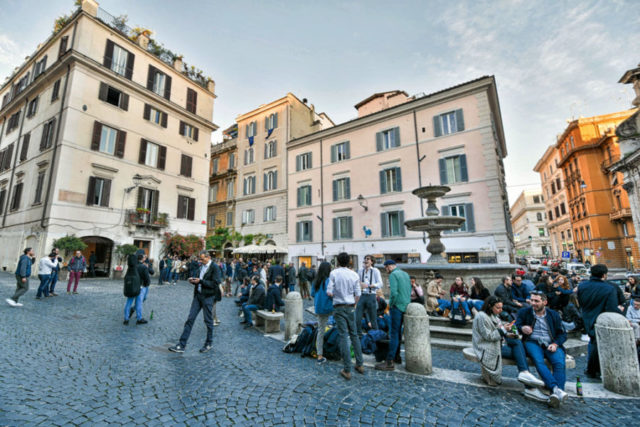
Inspired by that question, I’ve brainstormed my suggested home-base neighborhoods for 10 of Europe’s most popular cities. This intel is hard-earned, from years of scouring these cities for accommodations to recommend in our Rick Steves guidebooks .
Those lists are below. F or each city, I’ve broken my choices down into three categories:
Central and Touristy. This is where you’d stay to have the top sightseeing right outside your door. However, that also means these neighborhoods are touristy, often a bit tacky, very expensive, crowded, and not particularly “authentic” or “local-feeling.” But sometimes having everything close at hand is worth making those sacrifices, especially on a quick, targeted trip.
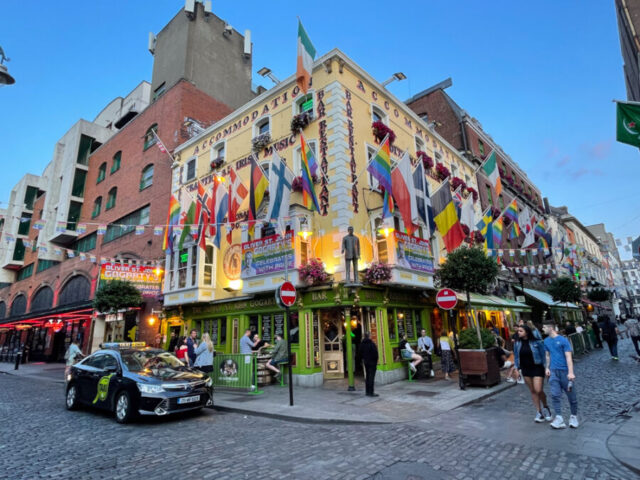
Hip and Foodie. Every city worth its salt has an edgy, “emerging” restaurant and nightlife zone. These can be either central or more remote; either way, they’re typically less polished and more characteristic, and they tend to skew more youthful. If you’re in town primarily to check out all the “destination” foodie restaurants, rather than to sightsee until you drop, and if you’d like to settle in to the local version of Williamsburg, Los Feliz, or Wicker Park…then these neighborhoods are for you. (If you don’t know what those names mean, then these neighborhoods are probably not for you.)
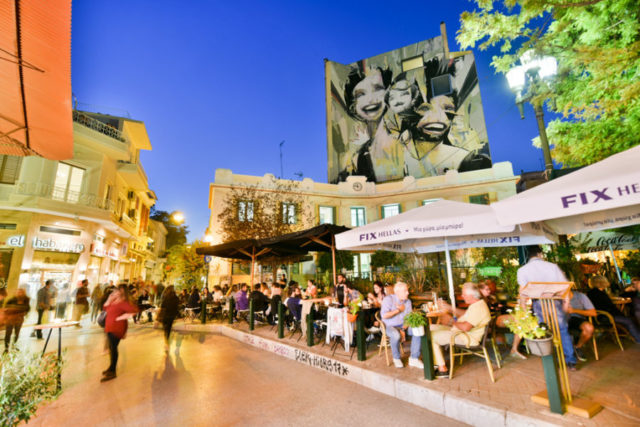
Charming and Residential. If you don’t mind commuting to the main sightseeing and trendiest eateries, it can be worthwhile to stay a little farther from the city center. More sedate and charming than the central districts, these neighborhoods feel “older-local” as opposed to “younger-local.” Because they’re less central and less touristy, lodgings are often more affordable (though certain high-end suburbs can be surprisingly pricey). If the “Hip and Foodie” places are for hipsters, then the “Charming and Residential” places are for yuppies and retirees. Just be prepared for a longish metro, bus, or tram ride to achieve most of your bucket list.

Use the suggestions below as a starting point when searching for accommodations — whether hotels, B&Bs, or short-term apartment rentals (like Airbnb). Many room-booking search engines allow you to enter specific neighborhoods to narrow down your options, or you can search via the map. Read reviews carefully, within these areas, to make sure the lodgings you’re considering match your expectations. And here’s a pro tip: Before booking, go for a little “virtual stroll” of the surrounding area on Google Maps Street View to make sure it looks like a place you’d like to settle in.

Touristy/Central: Soho and Covent Garden can’t be beat for access to many of the top sights, the West End theater scene, and some of London’s best restaurants to boot.
Hip/Foodie: The East End, specifically Shoreditch and nearby, is where hipsters feel at home, with exuberant street art and many of the city’s most interesting restaurants. (Many top London restaurants began with a humble location in Shoreditch before opening a fancy one in Soho.)
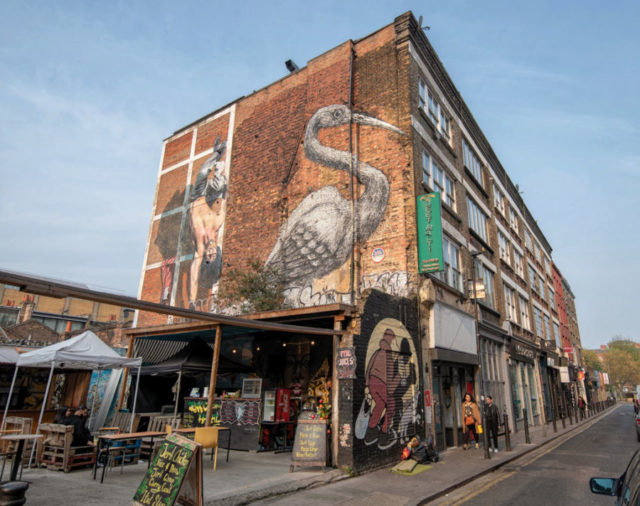
Charming/Residential: Try neighborhoods just to the west, surrounding Hyde Park and Kensington Gardens ( South Kensington, Notting Hill, Earl’s Court ); or to the north, near the British Museum ( Marylebone, Fitzrovia ). In this vast city, there are countless other choices, depending on how far out you’re willing to travel; Dulwich , to the south, and Ted Lasso’s Richmond , to the west, are each a 30-minute commuter train ride out of the center.
Touristy/Central: It’s hard to resist staying near the Eiffel Tower (ideally with a view from your window); either there, or in the Latin Quarter (near the Île de la Cité /Notre-Dame and Île St. Louis ) puts you very close to the sights…and the crowds.
Hip/Foodie: For something that’s still quite central, but more funky, consider the Marais, or some of the neighborhoods just beyond it: Try Oberkampf and Canal-St-Martin , just to the north, and the Rue du Faubourg Saint-Antoine , just beyond Bastille to the east. The famous Montmartre is a strange combination of obnoxiously touristy and achingly bohemian…just as it was a century ago.
Charming/Residential: It’s hard to resist Rue Cler. This quintessentially Parisian, very central market street is that strange “unicorn” of neighborhoods that ticks only the best bits of both the “Touristy/Central” and “Charming/Residential” boxes. Another good option, slightly less characteristic but still handy, is Luxembourg Gardens .
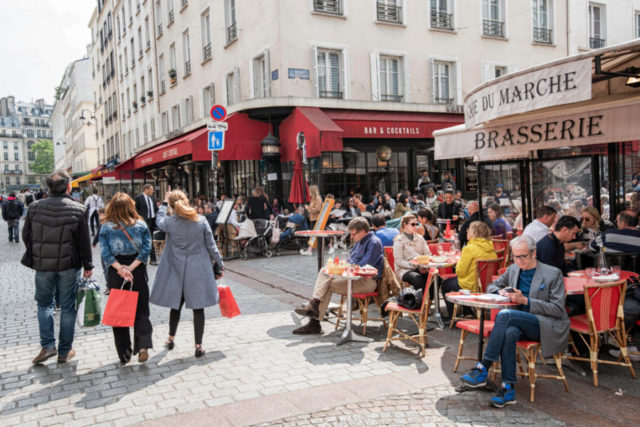
Touristy/Central: It’s a thrill to stay as close to the Pantheon as possible, putting you right in the magical and romantic heart of Rome. For fewer tourists, look in the sleepier, more appealing streets that run from Piazza Navona west, toward the river and Vatican City.
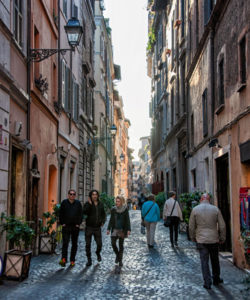
Hip/Foodie: I just love the Monti district, tucked in narrow residential lanes basically across the street from the Roman Forum. Testaccio , farther out, surrounds Rome’s most engaging market hall and offers close proximity to restaurants filled with foodies who’ve done their homework.
Charming/Residential: Trastevere, which could arguably fit in any of these categories, is extremely atmospheric, slightly less touristy than the most central parts of Rome, and still within a long but very engaging walk to many of the top sights. The small, quiet zone just behind the Colosseum (to the east) feels a world apart from the touristy chaos.
Touristy/Central: The city’s spine, Unter den Linden, has several big hotels but lacks personality. That’s why I enjoy the area around Hackescher Markt , just north of Museum Island, which has a little more character and enjoys about as convenient a location as you’ll find in this sprawling city.
Hip/Foodie: Not only the best neighborhood in Berlin, but one of my favorite hipster neighborhoods anywhere, Prenzlauer Berg has oodles of funky Berlin character, outstanding restaurants, a true neighborhood feel, and easy transportation connections around the city. For a deeper dive, consider Neuköln , Kreuzberg , or any number of other cool Kieze (neighborhoods) that Berlin specializes in.
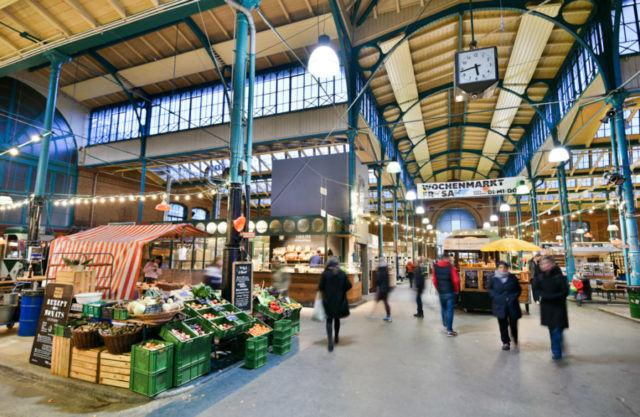
Charming/Residential: The former West Berlin (now called City West ) was once a Time Square-like “city center” hub; now it’s a sleepy, sedate, upscale, and charming suburb with relatively easy connections to the big sights. Savignyplatz is the centerpiece of this area, and the surrounding Charlottenburg district has a similar feel.
Touristy/Central: The Plaka , tucked at the base of the Acropolis (between the Monastiraki transit hub and the busy Syntagma Square), is super-central and super-touristy.
Hip/Foodie: Just across the street from Monastiraki, Pysrri is funky, youthful, and foodie, with an appreciation for wild street art and delicious street food, and close proximity to the thriving Central Market without being too far from the central sightseeing zone.
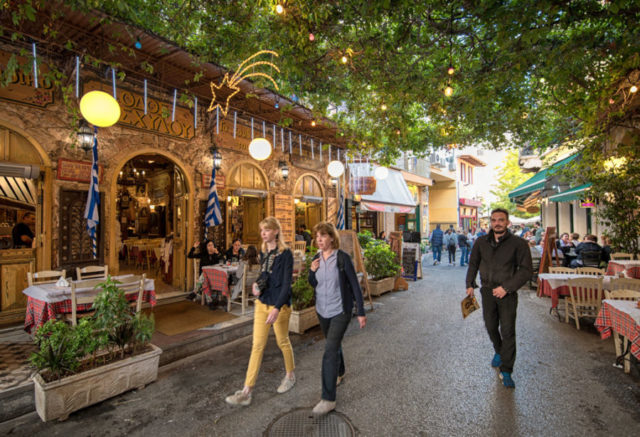
Charming/Residential: The sleepier streets of Makrigianni and Koukaki, on the “far side” of the Acropolis (to the south), make for a comfortable and relatively mellow home base.
Touristy/Central: If you’d like to have very easy access to the sights (and to endless tulips-and-wooden-shoes souvenir shops), stay somewhere along Damrak or in the nearby streets of the Red Light District .
Hip/Foodie: The Jordaan , a short stroll along postcard canals west of the central spine, is one of my favorite neighborhoods in Europe, period. It’s an ideal combination of two categories: Both hip and residential, charming and foodie, it’s a clear winner.

Charming/Residential: If looking beyond the Jordaan, the quiet streets of Southwest Amsterdam, around Museumsplein, tick this box — though the proximity to the Rijks and Van Gogh museums can make it feel quite touristy in places.
Touristy/Central: Pest’s Town Center (District V), with the Váci Utca pedestrian drag as its spine, is as central and as touristy as you can get. I prefer the area around the Opera House, along the most interesting stretch of Andrássy Út — just a little farther out, but very well-served by public transit, chockablock with great restaurants, and very close to the Seventh District fun (see next).
Hip/Foodie: The Seventh District, which overlaps with the Jewish Quarter just across the Small Boulevard from Pest’s Town Center, is one of Europe’s most engaging hipster neighborhoods. It comes with many of the city’s best restaurants (from street food to Michelin-starred) and the fun and fascinating “ruin pub” scene.

Charming/Residential: Buda, across the river from the modern city center, is sleepier, greener, and more sedate. It takes longer to reach much of Pest…but the views across the river are worth the commute. To stay on the Pest side, consider the streets flanking Andrássy Út once you get beyond the Oktagon, in the diplomatic quarter that heads out toward City Park.
Touristy/Central: Look no farther than Temple Bar and the nearby streets close to Trinity College, on the south bank of the River Liffey. (As a light sleeper, I’ll suggest checking reviews carefully for noise complaints if sleeping anywhere near Temple Bar.)
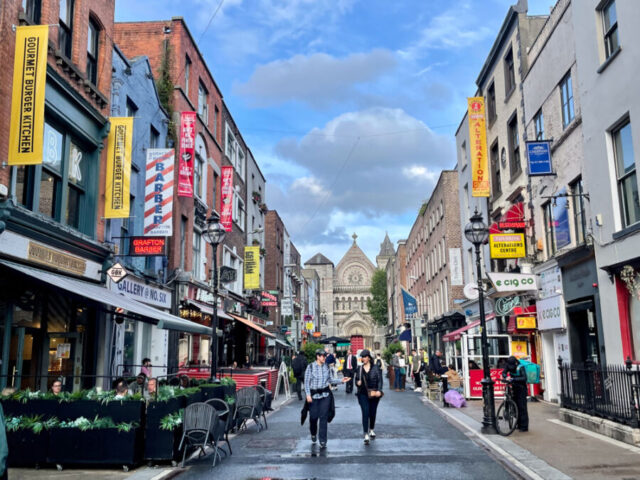
Hip/Foodie: Earlier this year, I discovered the charming yet hip “village in the city” of Stoneybatter, tucked away beyond Smithfield Square to the northwest. While a bit farther from the center, it has some of the city’s hippest restaurants (especially for brunch) and an “I could live here” vibe.
Charming/Residential: South of St. Stephen’s Green, you encounter fewer tourists and a more local feel. I particularly enjoy the area along the southern canal belt; if you’d like a hipper stretch of this area, try to get close to happening Camden Street and the Portobello area.
Touristy/Central: There’s a good reason many tourists enjoy staying in the city center: near Plaça de Catalunya, in the Barri Gòtic, and along the Ramblas . This is Barcelona at its most vivid, touristy, crowded, chaotic, and fun.

Hip/Foodie: To escape some of the crowds of the Old City, head to El Born — an easy walk just east of the Barri Gòtic. This area, with the Picasso Museum and Santa Caterina Market, has a more bohemian feel, including great restaurants.
Charming/Residential: The carefully planned Eixample district, which surrounds the Old City on all sides, has an ritzy “uptown” vibe. This is the place to stay if you’d like to pretend you’re a Catalan urbanite for a few days. Or consider the tight, old-school Barceloneta fishermen’s quarter near the water.
Touristy/Central: For such a sprawling city, Istanbul has as surprisingly compact sightseeing core: Sultanahmet, loaded with hotels for tourists who want proximity to the great sights; just downhill, Sirkeci is similar.

Hip/Foodie: Kadıköy, across the Bosphorus on the Asian side, is both hip and residential. Back on the European side, consider Beşiktaş, along the Golden Horn below the New District.
Charming/Residential: The New District, across the Golden Horn from the old city center, is still quite urban and intense in places. But you’ll also find some pleasant back streets where you can settle in to a local neighborhood.
So…what did I miss? Any favorites to add? I’d love to hear your suggestions in the Comments.
I’ve gotten to know all these great European cities through updating our Rick Steves guidebooks — where you’ll find out a lot more about all of these places, including extensive lists of our handpicked hotels and B&Bs in each area.
On Arrival: The First, and Worst, Few Hours of Any Trip
“I’m getting too old for this.”
This is what I think to myself, without fail, upon first arriving in Europe…stepping bleary-eyed off that 10-hour, marathon, overnight flight at Amsterdam Schiphol, or Paris CDG, or London Heathrow.
I’m on the downhill side of my forties — admittedly, not what most people would consider “too old.” But even on my very first trip to Europe, as a bright-eyed college kid, I felt positively ancient on arrival. International air travel is a highly specific constellation of frustrations, maneuvers, and indignities that sap the enthusiasm of anyone, old or young.
There aren’t many hard-and-fast rules of international travel. But one of them is this: The absolute worst few hours of any trip invariably take place on your day of arrival. This period of fitful adjustment starts around the time your plane begins its descent toward Europe: Peering out the window and through the clouds at tidy green farms hemmed in by canals, you wrap up your overnight marathon of watching movies that were too bad to see in the theater, and you begin assembling your personal items to deplane in a new continent.

On arrival, you’re treated to a cramped little bus journey across the tarmac, from the plane to the gate. If you make it onto the bus quickly, you may actually find somewhere to sit down…then spend that jostling ride with strangers’ butts and elbows and neglected shoulder bags slapping your face. If you get on late, you stand up — awkwardly unbalanced as you strain against your overstuffed carry-on — then teeter to and fro, desperately hanging on to the slimy metal bar or the little dangling handle that’s always juuuust out of comfortable reach. Either way, hold on tight as the bus driver careens around the uncongested airport runways as if he’s trying to catch every yellow light in downtown Palermo.
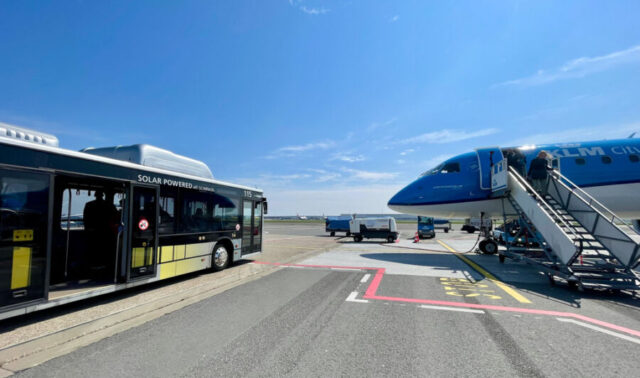
Reaching passport control (Ah, yes: passport check between flights! Why does this always catch me by surprise?), I gauge how long the line is, and how long I have until my connecting flight, and do a little arithmetic to determine my optimal degree of panic. Thankfully, on this connection, I’ve got just enough time to keep things below “abject” levels.
The long row of about a dozen glass booths, like giant aquariums, could be churning through this line. But nearly all of them are empty. The two that are staffed process new arrivals at a rate far, far slower than the flow of anxious travelers to the back of the line.
Several flights’ worth of passengers stack up behind me. I overhear people pleading that their flight leaves in 30 minutes…20 minutes… 10 minutes, for the sake of all that’s holy! To their credit, the agents managing the passport line — who represent an extraordinarily thin line between this fast-growing scrum of antsy travelers, and utter anarchy — survey each case in turn and make reasonable exceptions. At one point, there are enough close-cutters that they create a second line just for them; a few minutes later, as that “line” swells into an unruly mosh pit, they mold it into two discrete lines, each terminating at a passport agent.
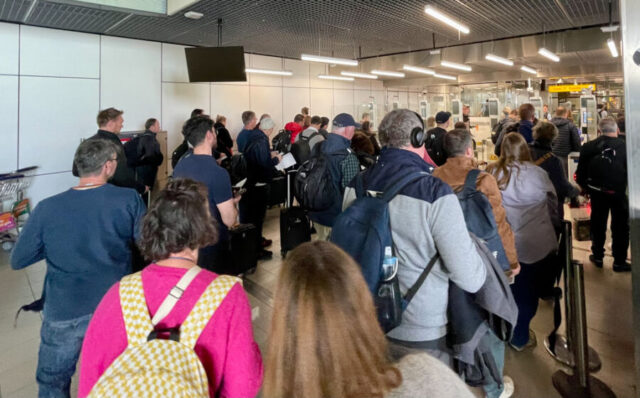
Those of us who have somewhere between 30 minutes and 10 hours before our connecting flight can only watch the chaos unfold as we wait…and wait…and wait…and wait. The extroverts in line corner the introverts for some idle, exhausted small talk. Finally, two more passport-control agents appear from deep inside the bowels of the airport — having completed their lunch break about a half-hour after their presence here would have been tremendously useful. At this point, the mid-day rush is well underway, the close-cutters are visibly melting down, and the line, at long last, starts to move.
After a mercifully brief grilling, I’m admitted into a sprawling zone of duty-free shops, tulip-bulb stores, bookshops, vendors selling electronic gadgets it’s hard to imagine anyone buying (much less using), fancy restaurants perched in glass boxes high above a marbled plaza, escalators angling off every which way like an M.C. Escher etching, globetrotters with big black circles under their eyes staggering through the vast halls while barely avoiding careening into one another, those hyperventilating close-cutters sprinting to make an impossible connection, little golf carts weaving between the disoriented throngs, and, of course, a McDonalds and a Starbucks.
Somewhere in there, I find a bathroom. The American in me wishes for those sprawling 20-holers that you find in big airports in the USA, where two full soccer squads could relieve themselves without a wait. But many European airports, for the sake of efficiency or sadism (or perhaps both), prefer cramped little 3- or 4-holers, where an awkward queue forms in the tiny no-man’s land between the stall doors and the sinks. And, of course, there’s nowhere sanitary to set down your bag — making you wish you’d checked it, after all.
Following the maze of directional signs, I find my connecting gate. Serendipitously, both my arriving flight and my onward flight are exactly 25 minutes late. That gives me about 10 minutes to zone out — or did I actually fall briefly dead asleep? — on an uncomfortable chair between people conducting extremely loud cell phone conversations in Hungarian.
I never cease to be fascinated by the liminal space of an international airport. Humanity from all corners of Europe — and the globe— mix and mingle in its cavernous concourses. Then, you cross the threshold into a gate area…and suddenly, the internationality of the place you just left is diluted with a powerful slug of the place you’re about to go to.
The gate for my flight to Budapest is a microcosm of Budapest itself: Perhaps two-thirds of the people around me look, talk, dress, and smell like Hungarians. This is the first moment of this trip where I’m recognizably “in” Hungary — yet still hundreds of miles away. And if I backtrack 50 paces into the concourse, the concentration of Hungarians instantly plummets to numbers more in line with the Hungarians-to-humanity ratio…which is to say, I could walk all the way back to my first gate and count on one hand the number of Magyars I encounter. They’re all tidily sequestered in this one tiny sub-space of a sprawling mega-space.
(This phenomenon was particularly apparent during the late stages of COVID. If you walked along the concourses of SeaTac Airport, the number of passengers who wore masks at each gate was directly proportional to the blueness of the state they were flying to.)
This works in reverse, too: Leaving your plane, a sealed capsule representing humanity in the place you just left, you can actually feel that ratio diffuse as your fellow passengers disperse into the terminal. If you’re departing a place you love, this is a sad sensation, like graduating from high school and watching your buddies head off to colleges in distant cities; if you’re departing a place you’ve had enough of, it’s more pleasurable, like you’re finally moving on.
Then again, maybe I’m just hallucinating. Am I at my 20th, 21st hour since I last slept?
After another tortuous bus trip across the tarmac, I’m seated on my connecting flight. The guy next to me — who wears aviator glasses and a stencil of Leonardo da Vinci’s Last Supper tattooed on his forearm, and, based on how he puzzles over the operation of his seat belt, may never have been on an airplane before — is all elbows. But by this time, I’m exhausted enough to nod off between snippets of the mindless Netflix entertainment I’ve downloaded. At one point, they hand me an individually shrink-wrapped cheese sandwich with a robin’s-egg-blue sticker that says “New — Improved Recipe,” and I snicker to myself about how much the recipe for a cheese sandwich can actually be “improved.” But then I take a bite. And it’s quite possibly the most delicious thing I have eaten in my life. Or at the very least, since I got on the plane in Seattle.

Finally, I’ve reached my destination! Following the little Arrivals stickers on the floor like a treasure map, through yet another mazelike airport — mysteriously busy for a random Tuesday afternoon at 4 p.m. — I find my way to the baggage claim, then step out into that brackish space where the hermetically sealed, authorized-secure world of The Airport meets unwashed reality.
A dozen people stand outside that door, clutching little signs with the names of strangers. At this moment, I wish nothing more than for my name to be scrawled on one of those placards. Unfortunately, I didn’t have the foresight to make that particular arrangement…so I’m on my own.
Worse, I’m updating a guidebook. That means that the material I enjoy updating the least — the logistics of getting from the airport into town — is also the material that I have to reckon with at the moment I’m more exhausted and less patient than at any other point in my weeks-long journey. I head out to the curb to lay eyes on the public bus stop, and to tinker around with the ticket machine to make sure it has English instructions and takes credit cards (of course it does, because, you know, it’s 2023). And I quiz a couple of taxi drivers about how much it costs to ride into town — an exercise that they seem to enjoy even less than I do, if that’s possible…but then, we’re all just pawns in the same big game that nobody really controls.
I stumble through my chores and decide on the shared minibus transfer to my hotel…then instantly regret it, when I realize that means I’ll have to wait for another 15 minutes until a quorum of fellow passengers arrives, enough to merit the trip. (Why didn’t I just pay €10 more for a direct taxi? These are the bewildering decisions one makes at the culmination of a long journey, and the reason why you’re more prone to epically stupid mistakes upon arrival than at any other point in the trip not involving unhealthy volumes of alcohol. One time, at the Puerto Vallarta airport, I withdrew some pesos and left my debit card inserted in the ATM — with the PIN entered! — before heading to my lodgings.)
No matter. I’m finally back in Hungary — many years delayed, thanks to COVID — and excited to get reacquainted with one of my favorite cities. The rush-hour drive into town is a blur; unexpected detours are made en route to discharge my fellow passengers; and then, just when I’m wondering if maybe I died on the flight and have slipped into some sort of purgatory, my driver turns up an anonymous-feeling side street and — hey presto! — we’re in front of my hotel
“Köszönöm szépen,” I gargle, thanking the driver with a phrase that becomes muscle memory after a day or two in Hungary, but in this moment sounds mindbendingly foreign. Stepping into my little hotel room, I set down my bags and let out an epic fart that lasts for ninety full seconds…one that I’ve been holding in since somewhere over Nunavut.
After a few minutes lying on the bed, at precisely the instant that I’m about to fall asleep, I rally for one more little push. The sun low in the sky, and I’ll be asleep within a couple of hours. But first…
Stepping out of my hotel, I congratulate myself for having chosen this place — tucked around the side of Hungary’s achingly beautiful Opera House. I circle around to the front of the ludicrously opulent building. Wispy clouds float overhead, illuminated by the setting sun, creating an impossibly romantic European scene. And I think: I’m in one of the greatest, grandest cities in Europe — and I get to spend the next week here. Lucky me!
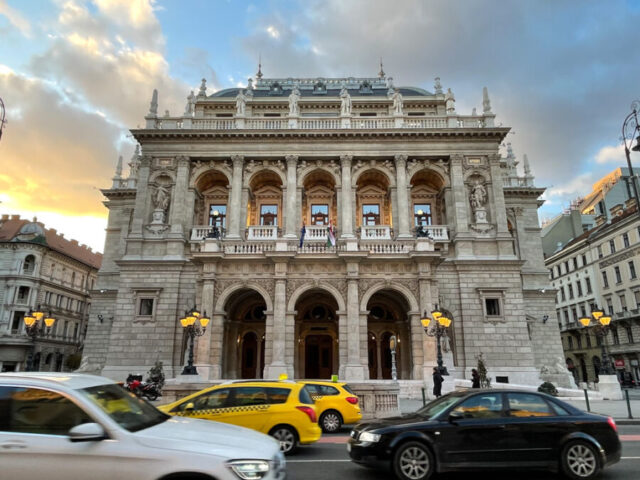
That’s when it hits me — that “Hey, I’m in Europe!” moment that I wait for at the start of each trip. It’s that moment when you realize all that you’ve just endured has been worth it.
In fact, let’s grab the reins here: You haven’t “endured” anything at all…you’ve been mildly uncomfortable for a few hours, maybe a little too tired. But isn’t that worth it, for the incredible privilege of living at a moment in history when you can seal yourself into a little metal tube, watch a few movies, eat some mediocre food, doze off if you can…and step off in an entirely different world?
And this is also the moment that you realize: You are not, in fact, getting too old for this.
Maybe someday.
But not yet.
I’ll be weathering this misery again soon, as I hit the road in June and July to update our bestselling Ireland guidebook and film some new TV shows in Iceland. If you’d like to come along on my summer travels, follow me on Facebook and on Instagram .
And if you’d enjoy this kind of travel writing, be sure to check out my travel memoir, The Temporary European .
10 European Discoveries for 2021
On the horizon, there is light. The sun hasn’t risen yet, but it’s coming. Although it has never been more important (or harder) to continue staying home, limiting contact with others, wearing masks, and so on, it’s beginning to feel like 2021 may bring the “return to normal” — and the return to travel — that we all crave. It’s too early to begin planning trips, but it’s never too early to dream. So…where to?
The last several years, my New Year tradition has been to assemble a list of 10 European Discoveries. As we reach the end of a year of hardship, and face a new year of further uncertainty, I almost bailed on this idea. But we will return to Europe. It’s just a question of when. So I’ll keep with tradition — but with a new spin.
I believe that in the post-pandemic world, travelers will look for something different. Before COVID-19, we had gotten so busy, and so stressed by the crowds, that we forgot to slow down and hear the church bells — to savor those beautiful everyday moments of European life. (If I have a post-pandemic resolution, it’s to not make this mistake again.) Having renewed our appreciation for the incredible privilege of being able to go anywhere we want, we’ll seek opportunities to settle in, slow down, and be fully present in Europe. We’ll choose places just outside the mainstream, ones that reward patience and contemplation.
And that’s the theme of my 2021 European Discoveries: 10 places where you might want to settle in for a week, or a few, and really get to know a fascinating corner of our planet. I haven’t set foot in Europe in well over a year — with, I assume, several more months yet to go. It has afforded me ample opportunity to reflect on my 20-plus years of exploring Europe. And looking back on all of it, these are the places the burn brightest in my mind.
Where are you hoping to slow down and savor our world in 2021?
Soča Valley, Slovenia
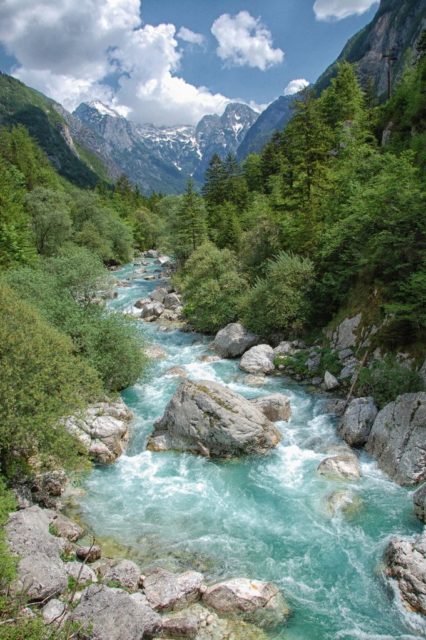
I can think of few places I’ve missed more in 2020 than Slovenia. And for me, the most beautiful place in this incredibly beautiful country is the Soča Valley, where a turquoise river cuts a gorge deep into soaring alpine cliffs, just a few miles from the borders with Austria and Italy. Historians know the Soča Valley for its fierce mountaintop battles during World War I (this is where Ernest Hemingway was wounded while driving an ambulance). And contemporary travelers know it as an adventure-sports capital (whitewater rafting, canyoning, paragliding) and home to the restaurant of Ana Roš , the world’s best female chef . You can get a taste of the Soča Valley on a very busy one-day side-trip from Lake Bled or Ljubljana. But why not settle in for several days? Sleep at a tourist farm on a high-mountain pasture, wake up each day to the sun peeking over snowcapped mountains, and spend your breakfast (of farm-fresh eggs) deciding which breathtaking hike or scenic drive to do today.

The Markets of Provence
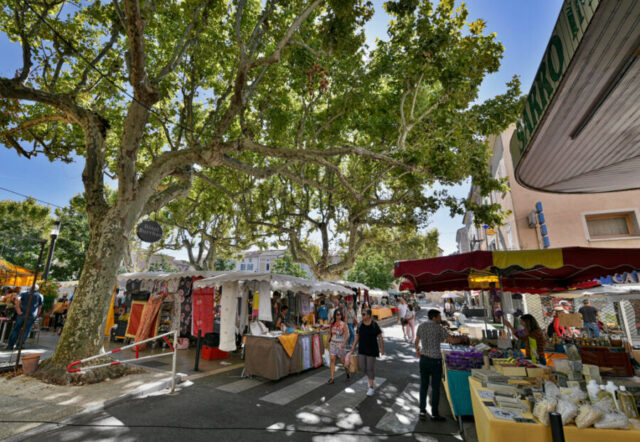
In September of 2019, my wife and I had a full week to unwind anywhere in Europe. Already exhausted from a packed and fast-paced year of travel, we opted for a quiet weeklong break in the South of France. Why? We wanted to savor the delightful market days (jours de marché) that hop from place to place around the bucolic Provençal countryside. In one week, we sampled seven different markets, each with its own personality . Yes, Provence is packed with other attractions: great sights and wine-tastings and gourmet meals and scenic hikes and hot-air balloon rides. But the markets are precisely the type of sensory super-experience we’re all desperate for after a 2020 spent very close to home. After living through a time when going to the corner grocery store feels like high adventure, imagine the thrill of strolling a lively town square, generously shaded by plane trees, as you choose a little wheel of cheese for your picnic from a mound of fragrant options, browse for just the right produce for a home-cooked Provençal feast, and bite into a strawberry that truly, intensely tastes like strawberry .
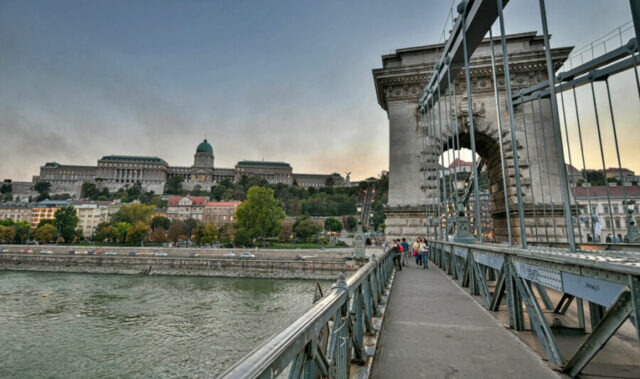
I wrote the book on Budapest… literally . And yet, even after 20-some visits, I still can’t get enough of this grand city on the Danube. With each weeklong visit to update my guidebook, the list of things I’d still like to see and do gets longer, not shorter. The melting pot and de facto capital of Central Europe, Budapest’s unique urban culture mixes a respect for tradition with a cosmopolitan openness to creativity and innovation. It wins my vote for the hands-down best restaurant and nightlife scene in Europe. And yet it also has a stately elegance, with ornate turn-of-the-century buildings, inviting tree-lined plazas, and wooded hills ideal for nature hikes. (And don’t get me started on the thermal baths .) Last March, I had already booked my tickets for yet another visit to Budapest, and I couldn’t wait. That trip, of course, never happened. And by the time I finally get back there, the anticipation will be unbearable. I never know precisely what I’ll see, do, and learn in Budapest. But I know it’ll create lasting memories.
Iceland’s Ring Road
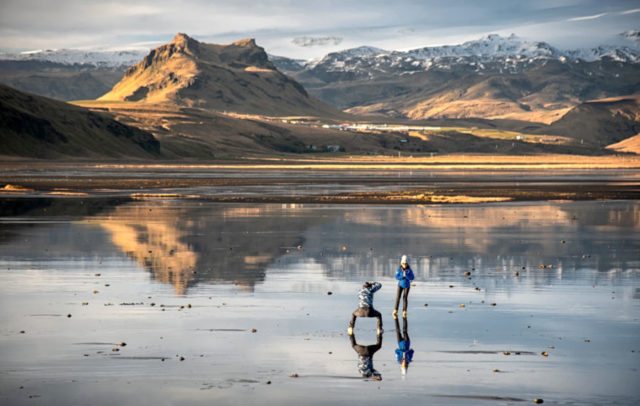
When we produced our Rick Steves Iceland guidebook , we included a “how to” chapter on Europe’s ultimate road trip: driving 800 miles on Highway 1 around the perimeter of Iceland, connecting astonishing scenery, geothermal hotspots, glaciers and icebergs, charming fjordside settlements, and warm and wonderful Icelanders. We covered the Ring Road generously in our book, even though we figured very few people would devote the full week required to do this trip justice. But maybe we were wrong. The pandemic has made National Lampoon’s Vacation -style road trips all the rage again. There’s never been a better time to rack up some serious miles through cinematic landscapes and have an honest-to-goodness adventure. And Iceland is made to order for “social distancing” as we tiptoe into the post-pandemic future. My Ring Road post covers the basics; if the photos and places intrigue you, forget about that “48-hour Icelandic layover” you’ve been contemplating…go all-in on the full Ring Road.
North Wales
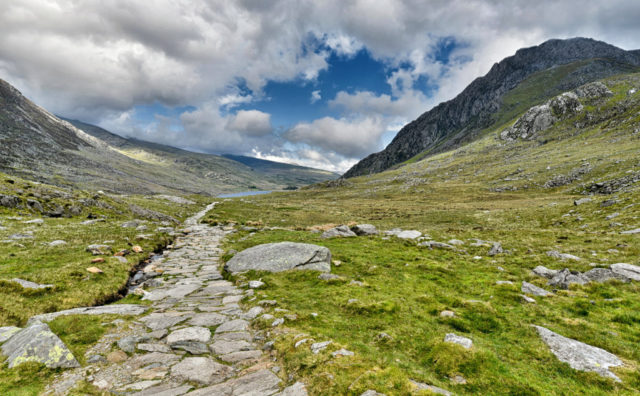
Recently I had the joyful experience of driving around North Wales (roughly the triangle formed by Conwy, Caernarfon, and Ruthin) for several days to update our Rick Steves Great Britain guidebook . I adore Europe’s plucky, off-the-beaten-path cultural eddies, and North Wales tops the list. Along with offering a fascinating crash course in Welsh culture and language, this region is studded with towering stone castles that make you feel like a kid again, a rugged landscape of craggy mountains and slate rooftops, and cheery red dragons laughing down from every flagpole. And it’s compact, making it easy to see a lot from any one of a number of charming home bases. While less known than the Scottish Highlands or Ireland’s Dingle Peninsula, North Wales is every bit as fun, scenic, and culturally rich.
Maramureș, Romania
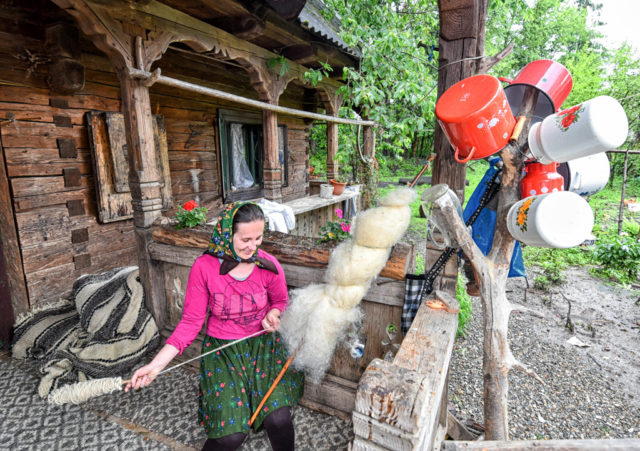
Years ago, my Dad and I went on a road trip through Romania, seeking traditional culture. When we came to Maramureș — ten long, potholed hours of driving north of Bucharest — we felt like anthropologists stumbling upon a place that time forgot. The rolling green hillsides are dotted with giant, tipsy haystacks. Rustic villages with mud roads — and more horse carts than cars — are lined with elaborate wooden churches and ceremonial gateways. Shepherds living in split-wood shacks make cheese like medieval peasants . And riverside settlements bustle with industry dating back to biblical times, from carpet-washers to fulling mills to to weaving looms to moonshine stills. This is not an “open-air folk museum” — it’s the real deal, Europe’s Amish Country. As our world changes at a dizzying pace — which only accelerated in 2020 — there’s no guarantee that Maramureș traditions will survive for much longer. ( Teo Ivanciuc , an excellent local guide who helped us film our TV segment in Maramures , would love to show you around.)
Camino de Santiago, Spain
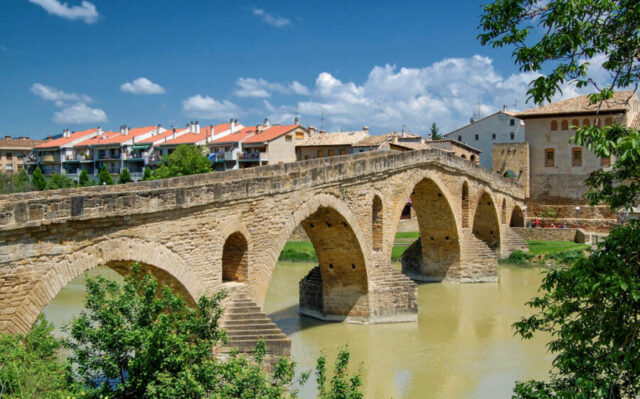
In the Middle Ages, pilgrims walked from all over Europe to venerate the bones of St. James in Santiago de Compostela, at the northwest corner of Iberia. This route — the Camino de Santiago — was largely forgotten over the centuries, only to be rediscovered in our own lifetime by travelers seeking an escape from modern life. After a year of deep soul-searching, there’s nothing like a four-week hike to clear the mind, synthesize all we’ve learned, and contemplate where to go from here. Begin in the green Pyrenees foothills of Basque Country, then walk across the arid plains of northern Spain, through villages and cities and across stone bridges from Roman times, before finally passing trough the wilds of lush, green, and rocky Galícia — all along the way, sleeping in rustic pilgrims’ hostels and following scallop shells through the wilderness. I’ve hiked bits of the Camino here and there (and I drove the entire route, end to end, to write a “how to” chapter in our Rick Steves Spain guidebook ). But I’ve never been so tempted to do the full Camino the old-fashioned way.
Lofoten Islands, Norway
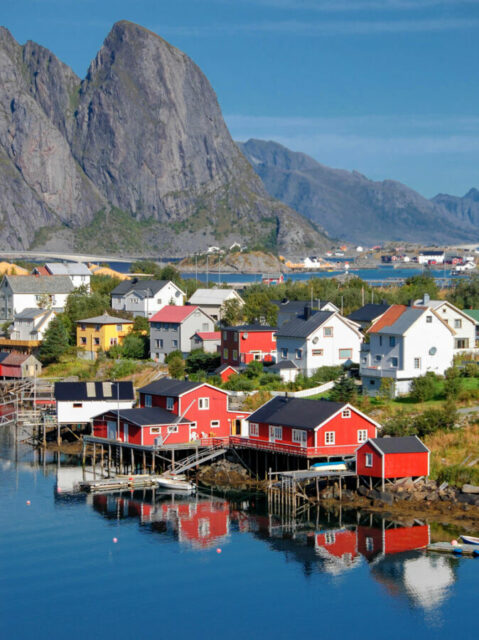
All my life, I’d seen this magical place in postcards and coffee-table books: soulful fjords with cut-glass mountains rising high above serene, deep waters, speckled with red cottages and almost no people. My wife and I decided we simply had to see this scene for ourselves. And when we finally made it to the Lofoten Islands — above the Arctic Circle and chilly even in August — we found it even more stunning than the photos. Getting to the Lofoten requires some effort (from Oslo, fly due north for an hour and a half), so you might as well settle in. The rugged Norwegians who’ve carved out a hardy life up here, hanging cod to dry on rickety wooden frames, are adept at introducing visitors to traditional lifestyles. Rent a rorbu (cheery cottage perched on stilts over the fjord) and spend a few days just tooling around, from the “capital city” village of Svolvær to the end-of-the-road cod-fishing settlement called Å. We home-based in Reine, perched on a flat rock in the middle of a fjord with the most stunning views in all of the Lofoten, and from there we ventured out to see everything the archipelago has to offer.
New Zealand

Sure, it’s not “European” in geographical terms. But for anyone who loves Europe, New Zealand feels strikingly familiar…yet excitingly different. (One afternoon, you’re punting the River Avon in Christchurch, as if you were in an English country garden; the next day, you’re swimming with dolphins at Kaikoura.) After years of hearing from our well-traveled friends about this seemingly too-good-to-be-true land, my wife and I finally spent a few weeks here in early 2019. And we fell instantly, hopelessly in love. Yes, the scenery is gobsmacking, and Lord of the Rings fans are in heaven. But New Zealand is so much more: a melding of Europe and Polynesia set amidst an entertaining landscape, where majestic glaciers rise high above steamy groves of ferns and palm trees. We loved sampling the local wine, craft beer, and third-wave coffee culture; learning about the indigenous Māori culture; and getting to know the wonderful Kiwis, who somehow manage to be well-organized and ceaselessly competent while remaining low-key and easygoing. Even before we came home, we’d already started Googling “How do I emigrate to New Zealand?” Now that the Kiwis (under the steady and compassionate leadership of Jacinda Ardern) have managed the pandemic better than anyone, this little island nation is sure to be flooded soon with more than its share of tourists…and transplants. Why not finally get down there soon, ahead of the crowds? As soon as they open up to outsiders, New Zealand is at the top of our list of post-pandemic dreams.
Agriturismo Cretaiole , Tuscany
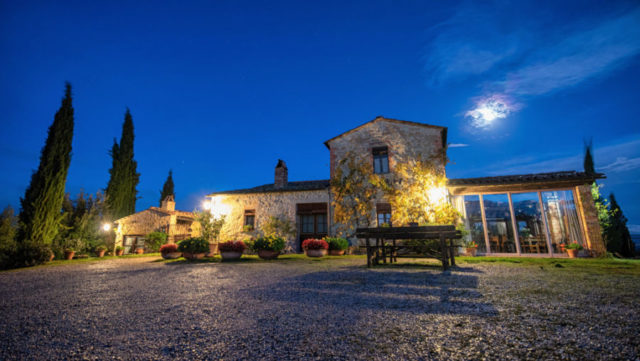
For years I’ve been singing the praises of a very special place to stay in the most beautiful corner of Tuscany. On a wooded ridge just outside Pienza, city mouse Isabella married country mouse Carlo and, together, they converted a traditional Tuscan farm into the best possible expression of an agriturismo — where visitors experience rural Italian culture and cuisine with modern comforts. With each visit, this place impresses me even more — and especially the vivid, perfectly orchestrated Tuscan experiences that Isabella creates for her guests: truffle hunts, pasta-rolling parties, olive oil appreciation classes, wine tastings, deeply meaningful nature hikes, and on and on. When I close my eyes and picture the one place I’d love to get back to as soon as I can, it’s spending a week — or more — at Cretaiole .
On my most recent visit to Tuscany, a few months before COVID-19 hit, Isabella showed me around her gorgeous new boutique hotel (La Moscadella) , offering a similar Tuscan cultural experience with more luxury. But now that fine hotel, and the original farmhouse, sit mostly empty — one more tragedy in this year full of them. Whether it’s Cretaiole or some other perfect place you’ve discovered in your travels, small businesses are hurting right now. If you have the means to travel, as soon as it’s safe, consider booking a return visit. Helping to jump-start these businesses is the least we can do, considering all of the joy people like Isabella and Carlo have brought to our lives over the years.
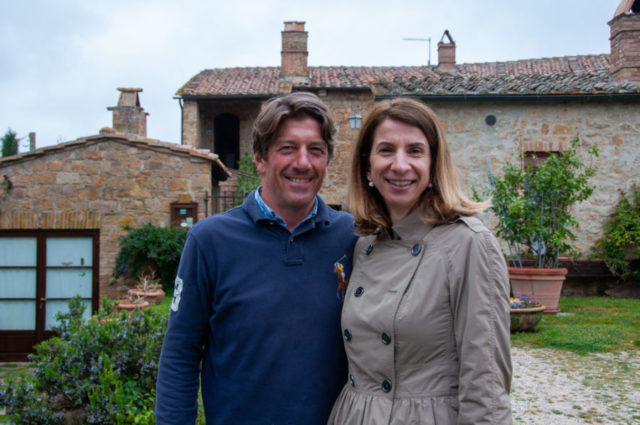
I’m hoping that 2021 brings good fortune and a return to what we love, both for us travelers and for the people we meet on the road. Like all things, this too shall pass. And a year from now, if all goes well, we’ll be comparing notes about a whole new slew of discoveries for a new age of travel.
Europe’s 10 Best Markets
What traveler doesn’t love a great European market? There are few better windows into local life than rubbing shoulders with shoppers, browsing stands piled high with colorful produce, nibbling on street munchies, and being fully immersed in the sights, sounds, and smells of the local community.
Over half a lifetime of traveling around Europe, I’ve been collecting my favorite market experiences for travelers — where you can glean some insights into local culture and cuisine, and browse for a good, local, quality meal. This is a mix of old-school covered markets, trendier food halls, and sprawling, open-air markets that take over an entire neighborhood or town. I’ve heavily skewed my suggestions to foodie options, where you’ll find dishes that are creative and interesting (rather than just fill-the-tank), while still being affordable. Happy browsing!
10. Mercado de San Miguel , Madrid, Spain

Just steps from the grand Plaza Mayor, in the heart of Spain’s capital, sits this 1915 erector-set market hall. Fully remodeled in 2009, today it’s a bustling showcase of edible Spain. Squeezing between the crowds, you’ll find only the best jamón ibérico (air-cured ham), Manchego and other artisanal Spanish cheeses, powerfully piquant skewered pickles and olives ( banderillas) , delectable pastries, little skillets of paella, tinned fish and seafood, brochetas (meat or seafood skewers) grilled to order, smoked salmon, sweet vermouths from around Spain, croquetas with various fillings, Mexican dishes from a Michelin-star chef, and robust Rioja wines. It’s a culinary tour of Spain, under one roof.
9. Östermalms Saluhall , Stockholm, Sweden
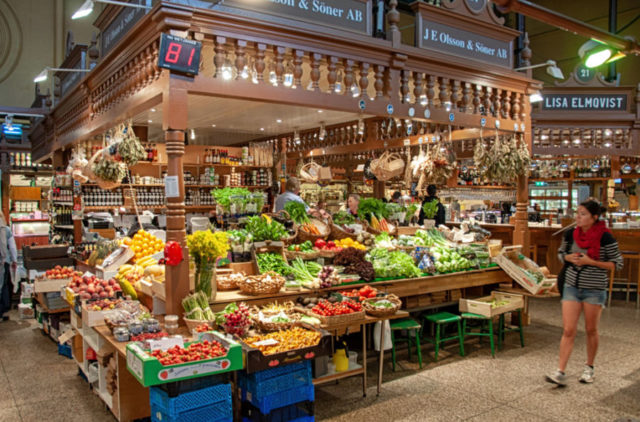
A classic. Anchoring Stockholm’s posh Östermalm neighborhood, this market hall is simply elegant. Handsome, hand-carved wooden stalls display just-so piles of produce, stacked as if posing for a still-life. The wares here feel…curated . Composed. With Scandinavian precision. There aren’t many bargains in this pricey city, but the Östermalms Saluhall is fun to browse for a high-end picnic, or to settle into a market eatery for a quality deli plate, a delicately composed salad, a sticky Scandinavian sweet roll, a splurgy seafood dish, a gourmet smørrebrød (open-face sandwich), a delectable handmade praline, or a selection of Lebanese small plates. Note: The food hall is undergoing a makeover through 2020; in the meantime, the vendors have set up temporary digs nearby.
8. Markthalle Neun , Berlin, Germany
Berlin’s Kreuzberg district is home to its most cutting-edge, engaging culinary scene — and Markhalle Neun is its flagship. Tucked in a workaday neighborhood away from the tourist sights, it fills a beautifully restored 19th-century hall with greengrocers, cheesemongers, butchers, fishmongers, florists, and bakers, all with an appropriately Berlin-hipster vibe. Meanwhile, food stands sell Berlin classics like Buletten (meatballs), Stolle (open-faced sandwiches), Brezel (big doughy pretzels), and Currywurst — but also Italian pastas, French crêpes, Turkish deli meats, Spanish tapas, and even BBQ from the USA. Markhalle Neun scores bonus points for its many special events (listed at www.markthalleneun.de ), including its Saturday farmers market and its “Street Food Thursday” — a beloved institution for Berliners seeking a trendy yet affordable dinner.
7. Mercato Centrale , Florence, Italy
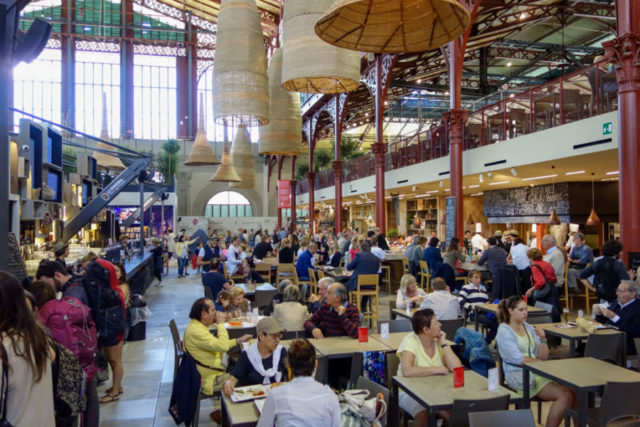
For years, I’d peek tentatively inside this cavernous market hall in the center of Florence, which felt dark and foreboding. With tattered stalls and piles of garbage out front, it felt like it hadn’t changed since the days of Vittorio Emanuele II. Then, in 2014, they converted the top floor into a high-end food circus. Just walk past the still-grubby produce stalls on the main floor, and hike up the stairs to a world of Italian taste treats: hand-rolled pastas, prizewinning prosciutto, massive steaks cooked so rare they still moo, melt-in-your-mouth panini , gourmet burgers made from Tuscany’s prized Chianina beef, rotisserie chicken, big juicy wads of mozzarella di bufala, handheld flatbread sandwiches called trapizzini , big slabs of rustic pizza, tender stewed beef cheeks, truffle-infused oils and pâtés, the rustic Tuscan bread soup called ribollita , deep-fried tasties, cannoli and other Sicilian sugar bombs, and high-end tripe sandwiches (a Florentine classic!). Travelers smart enough to escape the tourist-gouging restaurants on the main drag retreat to this upper level — like pigeons in the rafters — to take a break from intense Renaissance sightseeing with pretty much any Italian taste treat they can imagine. Tuscany is home to many foodie finds — but this is one of the best.
6. Belvarosi Piac , Budapest, Hungary
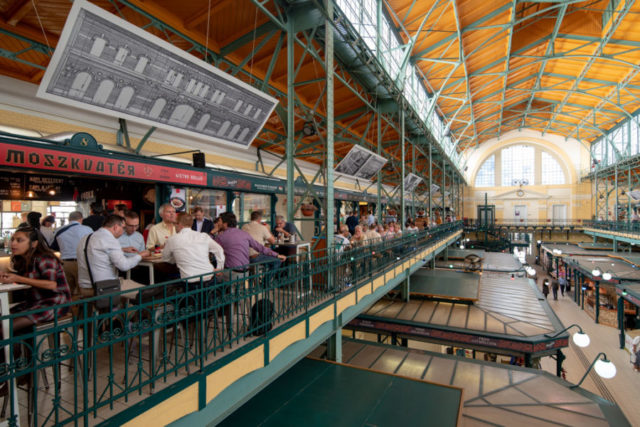
In Budapest, tourists flock to the Great Market Hall, an elegant palace of produce built around the turn of the 20th century. And you really do have to see the Great Market Hall. But don’t eat there — the “local”-seeming food counters upstairs specialize in ripping off naive tourists. Instead, head to a different, smaller, and far more authentic neighborhood market hall, also right in the city center (a couple of minutes’ walk from the Parliament): the Belvarosi Piac on Hold Street. In an atmospheric Industrial Age space that feels like the Great Market Hall’s little sibling, producers occupy the ground floor, while the upstairs is ringed by tempting high end-yet-affordable food stands: massive schnitzels at Buja Diszno(k), gourmet sausage at Lakatos Műhely, Russian grub at Moszkvatér (named for the since-rechristened “Moscow Square”), gourmet burgers at Kandalló, Thai-style khao man gai (poached chicken in garlicky sauce), and updated Hungarian classics at A Séf Utcaja. Anchoring the space, down on the main floor, is Stand 25 Bisztró . Here, celebrity chefs Szabina Szulló and Tamás Széll artfully fuse Hungarian classics with international influences (or is it the other way around?). While not cheap by market hall standards, Stand 25 a bargain for a Michelin-caliber lunch in a memorable setting (lunch only, plus dinner Friday and Saturday, book ahead).
5. Ballarò Market, Palermo
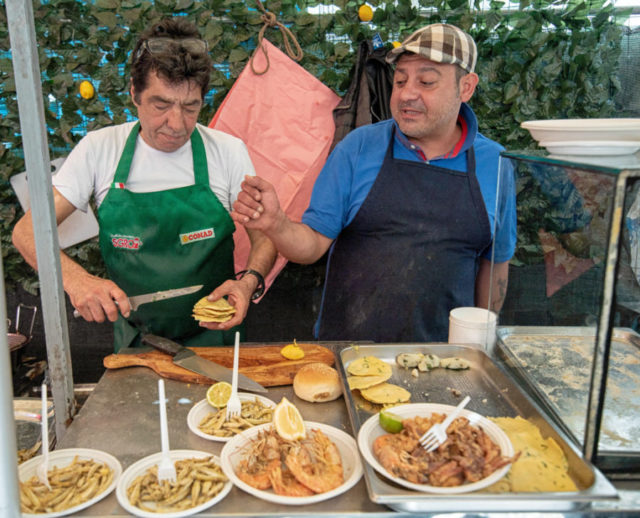
The Sicilian capital has some of the best, most vivid street markets in all of Europe. And the granddaddy of them all is Ballarò — seedy, chaotic, bewildering, and invigorating. Come here to jostle with Sicilians who verbally arm-wrestle for the best deals on the best ingredients. The vendors — continuing a tradition that supposedly dates back to Arab rule — warble their sales pitches with an otherworldly cadence, demanding the attention of passersby. Giant slabs of pink tuna perch on marble counters, like cadavers ready to be dissected. Produce stands overflow with vivid-purple eggplants, long, skinny Sicilian zucchini, and tomatoes that actually taste like tomatoes. Best of all, scattered throughout this multi-block span of barely controlled chaos are a wide variety of tempting street food stands, selling greasy napkins topped with dirt-cheap taste treats for every level of adventurous eaters — from arancine (deep-fried rice balls) and sfincioni (“Sicilian pizza”) to pani ca’ meusa (spleen sandwich) and polpo bollito (tiny boiled octopus, eaten whole). (For a complete rundown, check out my post on Palermo’s street food .) Go ahead, dive in — this is what real travelers live for.
4. Mathallen , Oslo, Norway
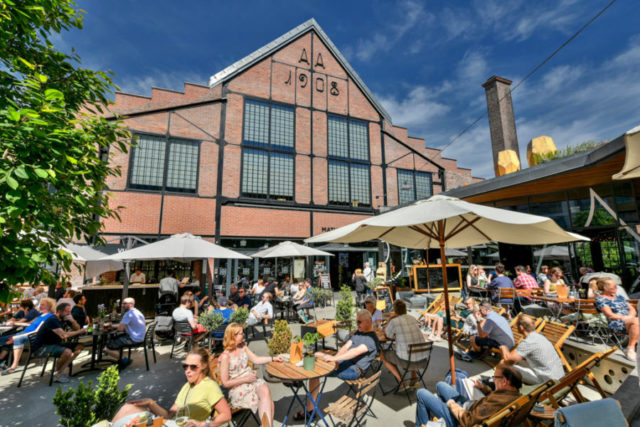
I love Oslo . But I’ve rarely found a memorable meal tucked among the dreary, blocky downtown core along Karl Johans Gate. However, just north of downtown runs the Akers River Valley, where the city has redeveloped a former wasteland of red-brick factories and warehouses into a lively people zone. Its centerpiece is Mathallen (“Food Hall”), filling the scavenged brick skeleton of a 19th-century factory. Norwegians recognize the limitations of their cuisine. And so, in addition to stands selling fresh, whole-grain bread (at Smelt Ostesmørbrød) sweet and savory pies (at Mildrids Kjøkken), and farm-fresh geitost cheese (at Ost & Sånt), you can nibble tapas, pastas, sushi, tacos and tequila, pizza, Asian street food, gourmet ice cream, and much more. Ringing the outside of the market are a variety of industrial-mod, higher-end eateries. I skipped the fried chicken and “global tapas,” and went a bit more traditional at Vulkanfisk , serving up affordable-for-Oslo, elegantly presented, fresh seafood (the garlic-sautéed scampi were a flavor bomb). Anytime I’m in Oslo at mealtime, I come up with an excuse to head up the Akers River to Mathallen.
3. Maltby Street Market Rope Walk , London
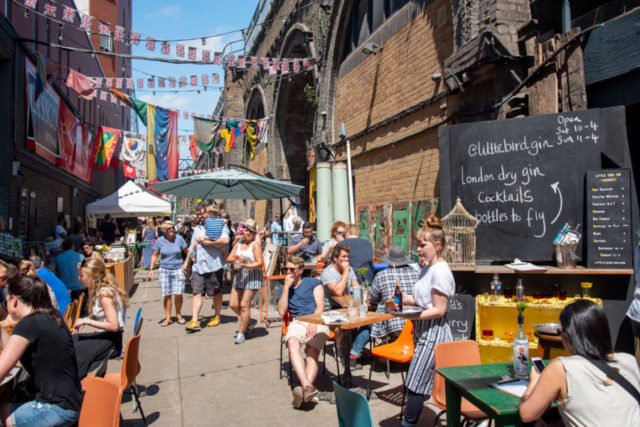
One summer, my wife and I rented an apartment in London for a week and checked out a different market each day. And at the end of the trip, the Maltby Street Rope Walk emerged as our favorite (every Saturday and Sunday). Tucked along a vintage brick railroad trestle, far from any tourist attractions (roughly across the Thames from the Tower of London), it’s an explosion of foodie energy. Beyond the hole-in-the-wall eateries, wine bars, taprooms, and Mozambique-style burger bars squeezed into the arches under the train tracks, the weekend market adds a world of pop-up food stands: grilled sandwiches oozing with tangy English cheese; little slices of rye bread mounted with melt-in-your-mouth Scottish salmon; slabs of grass-fed, dry-aged, rare-grilled hanger steaks; wild variations on Scotch eggs; Middle Eastern flatbreads with savory toppings; German-style sausages; gyoza steamed in wicker baskets; and a mouthwatering array of gooey brownies. For a more traditional “market hall,” it’s hard to beat London’s famous Borough Market. The funky Camden Market sprawls through a yellow-brick wonderland of old industrial buildings. The Portobello Road Market charms Notting Hill fans. And the Broadway Market feels like ground zero for East London’s hipster baby boom. But if I had to pick just one market that incapsulates cutting-edge London…it’s Rope Walk.
2. Mercado da Ribeira /Time Out Market, Lisbon, Portugal

My favorite European market hall has a split personality. One-half of the market is as classic as they come: traditional, rough-and-tumble vendors selling fragrant herbs, plump produce, and an aquarium’s worth of fish. It’s ragtag, ramshackle, and trapped in the 1950s, with rickety wooden stalls, puddles pooling on cracked tile floors, petticoat-clad grannies selling rough bunches of herbs, and Old World scales with dials that spin imprecisely as if digital were never invented. On its own, this market hall is endearing enough to earn an “honorable mention” on this list. But from there, you can step through a door into La Ribera’s other half: a sleek, futuristic, top-of-the-line, Time Out-themed culinary wonderland (opened in 2014). The two dozen eateries here include stands operated by five marquee, Michelin-rated Portuguese celebrity chefs selling affordably price tastes of their favorite dishes. You’ll also find smaller stands bursting with a variety of local and international meals: the beloved Portuguese steak sandwich called prego , croquetes with fillings both traditional and creative, bacalhau (rehydrated salt-dried cod), fresh-baked pasteis de nata and other pastries, Japanese-fusion dishes highlighting the long-forgotten influence of early Portuguese traders, traditional cheeses and charcuterie, catch-of-the-day, quality steaks, gourmet burgers, artful sushi, and crispy pizzas. Rounding out the scene are a well-stocked wine shop, a place to stock up on conserves (tinned fish with colorful wrappers), and a branch of A Vida Portugesa (a classy vendor of Portuguese-themed products, gifts, and keepsakes that tempt even non-shoppers). Whether for a meal or a one-stop-shop to stock up on all things Portuguese, Mercado da Ribeira is a winner.
1. Market Day , Sarlat, France

Sarlat’s street market is hard to top. It’s the refined yin to Palermo’s gritty yang. Twice weekly — on Wednesday mornings, and all day Saturdays — the pristine, lemony-sandstone streets of one of France’s finest towns become a big outdoor shopping mall. Locals pour in from the countryside to browse the stalls, reconnect with their favorite vendors, and bump into old friends. You’ll find baked goods, fresh meat, duck-in-a-can (confit de canard), giant wheels of rustic mountain cheese, tiny pyramids of fine gourmet cheese, nuts and dried fruits, explosively flavorful olives, mammoth chunks of nougat, snail shells prefilled for escargot, fruitcake sold by weight, a rainbow of preserves, salamis and sausages of every shape and size, and whatever produce is in season. When the noon bell tolls, the vendors begin packing up, and the shoppers scramble for café tables that catch just the right mélange of sun and shade. This is where the second phase of the Market Day ritual kicks in: taking some time to nurse a cup of coffee with someone you haven’t seen in a while. It’s all so simple…so sophisticated…so smart. If you won’t be in Sarlat, you can enjoy similar market days all over France; every community has its own, but popular ones include Uzès (in Provence), Beaune (in Burgundy), and several in Parisian neighborhoods. But Sarlat is the one that has left me with the warmest memories of an ideal market experience.
What’s your favorite market in Europe?
R.I.P. Imre Nagy: The Death of Rational Governance in Hungary
UPDATE (April 3, 2022): I originally wrote this blog post in January of 2019, when news broke that a beloved statue of anti-communist reformer Imre Nagy had been removed, under cover of darkness, from its prominent position in Budapest. This post offers a sort of “shapshot” of the situation at that time. Flash forward over three years, and now Hungary faces a choice: In today’s elections, they have an opportunity to remove from office the man who removed that statue from their capital. If you’re seeing news of high-stakes Hungarian elections and wondering what all the fuss is about, I hope this offers some context, from the perspective of an American traveler (heavily influenced by his Hungarian friends).
Well, they’ve gone and done it. They’ve taken down my favorite statue in Budapest. Godspeed, Imre Nagy.
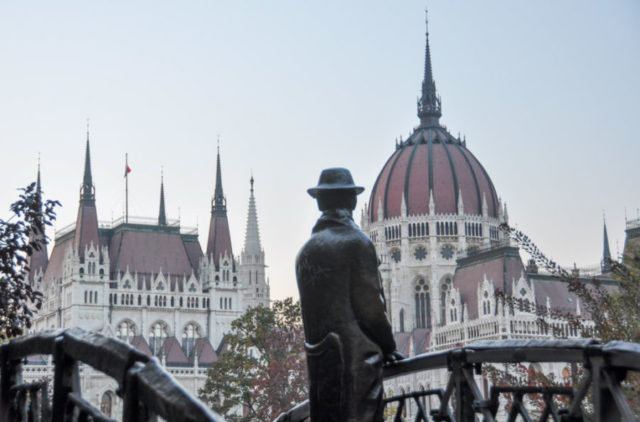
It’s a crazy time in Hungary. Let’s face it: It’s a crazy time just about everywhere — with Trump, Putin, and Brexit rewriting the rules of what’s “normal.” But it’s particularly crazy in Viktor Orbán’s Hungary, where even the great anti-communist crusaders of the Cold War are finding themselves, suddenly and inexplicably, on the wrong side of history.
Just a few weeks ago, I turned in my updated files for the upcoming sixth edition of our Rick Steves Budapest guidebook . This morning, I had to rewrite large sections of the book because of all the changes taking place in Hungary.
If you’ve been paying attention to the news, you know that Hungary’s prime minister, Viktor Orbán, and his far-right, nativist political party, Fidesz, are continuing their campaign to remake Hungary in their own image. On a previous visit to Budapest, in 2016, I posted about some of those changes — from a statue of Ronald Reagan that had been erected right next to a Soviet Army memorial; to a new monument honoring “victims of fascism” that conspicuously ignored the crimes of the Nazi-allied Hungarian government; to the patriotic new “Changing of the Guard” ceremony on Orbán’s glitzy, fascist-style square behind the Parliament; to the Transylvanian flag that flies on the Parliament building in place of the EU flag.
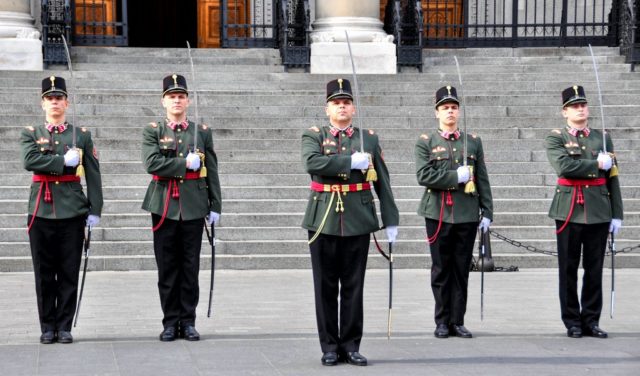
On that 2016 visit, a local friend asked about the job market in Seattle. She’s seriously considering moving her family stateside to escape what she perceives as her society crumbling around her. Her teenagers now learn history from textbooks written by politicians — the same Fidesz-penned books that are required to be spoon-fed to every student in Hungary. Fidesz enjoys revising Hungarian history as much as they enjoy keeping refugees and immigrants out of their country.
The intervening two and a half years have felt like an eternity. And even in just the last couple of months, the list of Orbán’s offenses has grown. Here are just a few of the changes in Hungary in the several weeks since I was there updating my book:
George Soros — yes, that George Soros , favorite punching bag of the American right — founded a university in his hometown of Budapest in 1991. As Hungary and its neighboring countries were just emerging from Soviet rule, Central European University offered students a place to study at a US-accredited institution, allowing them a foothold in the greater academic world of the West. CEU grew to become highly respected. But Soros — who is as loathed by Fidesz as he is by Fox News — is on the outs in today’s Hungary. And in December, CEU announced they will relocate to Vienna , after failing to meet Fidesz’s draconian new requirements to operate legally in Hungary.
Also in December, Fidesz announced a new law to roll back overtime protections for workers . (Because of Fidesz’s restrictive immigration stance, and because bright young Hungarian workers have left the country in droves, Hungary suffers from a labor shortage. Who could have predicted it?) This new policy — nicknamed the “Slave Law” — has spurred widespread protests . Even many Fidesz supporters are criticizing a government ostensibly dedicated to “family values” effectively requiring citizens to work longer hours.
Meanwhile, Viktor Orbán has finally moved into his over-the-top new palace , up on Castle Hill. Orbán grew tired of living among the commoners, so he evicted the National Dance Theater from their home near the old royal palace and renovated their building into a plush new residence for himself. My Budapest friends have been grumbling about this since it was first announced a few years back — “He thinks he’s better than us! He wants to be up on the mountaintop, looking down upon all his subjects.”

Worst of all, just a few days ago, I received an email from my Budapest friend, confirming that the rumors she’d told me in September have now come true: A beloved statue of the great communist reformer, Imre Nagy, which stood for more than 20 years facing the Parliament building, has been removed by Fidesz authorities . She wrote, “It is a sad day for many of us here!” (It’s worth noting that Budapesters are connoisseurs of monuments. The city is graced with more than its share of memorable statues, from whimsical to poignant. )
Imre Nagy (pronounced “IHM-reh nodge,” 1896-1958), now thought of as an anti-communist hero, was actually a lifelong communist. In the late 1940s, he quickly moved up the hierarchy of Hungary’s communist government, becoming prime minister during a period of reform in 1953. But when his proposed changes alarmed Moscow, Nagy was quickly demoted.
When Hungary’s 1956 Uprising broke out on October 23, Imre Nagy was drafted (reluctantly, some say) to become the head of the movement to soften the severity of the communist regime. Because he was an insider, it briefly seemed that Nagy might hold the key to finding a middle path between the suffocating totalitarian model of Moscow and the freedom of the West.
Some suspect that Nagy himself didn’t fully grasp the sea change represented by the uprising. When he appeared at the Parliament building on the night of October 23 to speak to the reform-craving crowds for the first time, he began by addressing his compatriots — as communist politicians always did — with, “Dear comrades…” When the audience booed, he amended it: “Dear friends…” The crowd went wild.
But the optimism was short-lived. The Soviets violently put down the uprising, arrested and sham-tried Nagy, executed him, and buried him disgracefully, face-down in an unmarked grave. The regime forced Hungary to forget about Nagy.
In 1989, when communism was in its death throes, the Hungarian people rediscovered Nagy as a hero. His body was located, exhumed, and given a ceremonial funeral at Heroes’ Square . (It was also something of a coming-out party for Viktor Orbán — yes, the current prime minister — who, as a twentysomething rebel, delivered an impassioned speech at the ceremony.) Nagy’s symbolic re-burial is considered a pivotal event in that year of tremendous change.
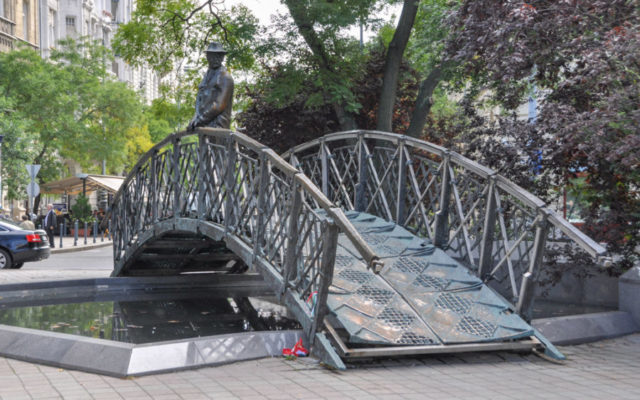
The Nagy monument near the Parliament, erected in 1996, has long been one of my favorites in all of Europe. Its design was poignant: Nagy stood upon a bridge, representing his own political philosophy, which sought common ground between the stifling communism of the USSR and the capitalist free-for-all of the West. The bridge itself was made of treads from Soviet tanks — like the ones used to put down the 1956 Uprising.
Nagy’s face wore an expression not of defiance or dominance, but of inquisitive compassion. He looked across the square at the towering red dome of the Hungarian Parliament, symbolically keeping an eye on the government.
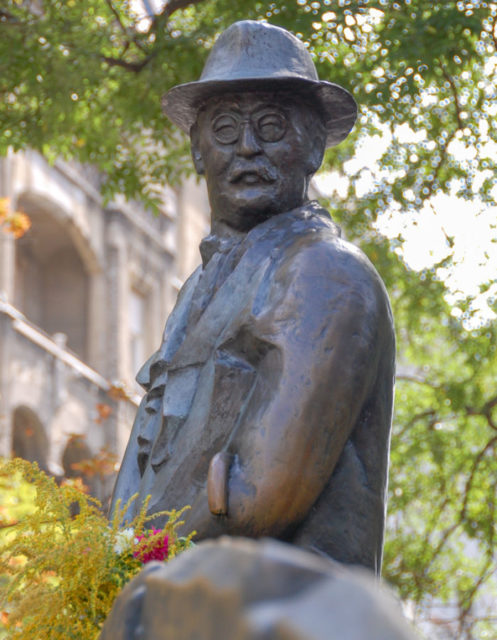
But now that statue is gone — removed with little warning and zero fanfare, in the middle of the night, just two days after Christmas. Viktor Orbán — who, let’s not forget, made his name lauding Nagy — has apparently decided to unilaterally reverse the rehabilitation of Nagy’s image. Fidesz claims that they are moving the statue to a different (and decidedly less prominent) location, on Jászai Mari tér, near Margaret Bridge. But no preparations on that site have taken place, leaving open the possibility that Nagy will again be brushed into the dustbin of history.
As someone who passionately loves Budapest, this worries and saddens me. It should worry and sadden you, too. Removing the statue of a gentle, heroic man who sacrificed his life to improve the lot of the Hungarians is a clear sign that Orbán believes history is open to his individual interpretation.
Let’s be clear: We’re not talking about removing Confederate flags or statues of Robert E. Lee, which are broadly offensive symbols of racism and slavery. There’s nothing offensive about Nagy to the vast, vast majority of Hungarians, who view him as a beloved figure. He symbolizes sacrifice in the face of oppression, and the courage to rise up for what’s right. Removing the Nagy statue would be more like taking down a statue to Martin Luther King, Jr., because of some obscure political beef.
The only Hungarians offended by the image of Nagy are communist sympathizers longing for a return to the darkest days of Stalinism. And, it seems, Viktor Orbán. It’s rarely constructive to psychoanalyze a despot, but it’s difficult to imagine why Orbán has it in for Nagy. He claims his goal is to return the appearance of the square to its pre-communist, pre-WWII glory days. Why, then, is Orbán erecting brand-new statues even as he’s taking this one away? Surely the truth is more deeply rooted. For one thing, because Nagy’s historical ties to communism place him on the left, Fidesz simplistically views him as an ideological enemy. And perhaps, as he continues Hungary’s slide toward totalitarianism, Orbán is uncomfortable with celebrating an upriser on Hungary’s grand Parliament square.
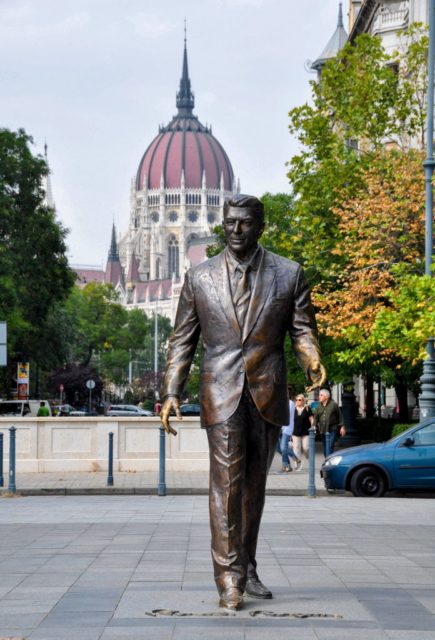
Adding insult to injury, that old memorial to Soviet soldiers still stands next to Ronald Reagan. To be entirely clear here: Fidesz has removed a statue of a freedom fighter, but has chosen to leave in place a monument to an army that “liberated” Hungary in order to occupy it for four and a half decades.
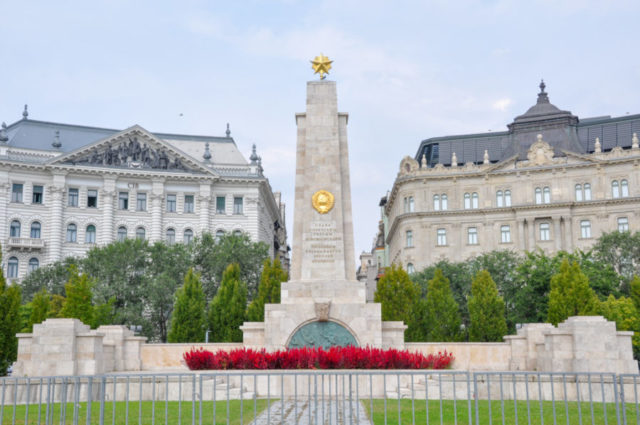
Someone once said, “May you live in interesting times.” But this is simply exhausting. Just a few years ago, someone who was executed by the communist authorities for his brave protest would be considered an unqualified hero. But in Viktor Orbán’s Hungary, nothing makes sense anymore. The next time I visit Budapest and walk past the Parliament, I’ll miss seeing Nagy’s comforting form, keeping a watchful eye on things. Rest in peace, Imre Nagy. And rest in peace, rational governance in Hungary.

- Tour Account ›
- Travel Forum ›
- Travel Forum
- Cultural / walkin...
Cultural / walking tours Budapest
Szia, any recommendations for walking or cultural tours, beyond Budapest 101 ? While I don't profess to know too much about the city, I hoping for something nuanced and in depth. Thanks in advance
PM me with an email and I have something that might work for you.
This topic has been automatically closed due to a period of inactivity.

The Best Tips For Hiking In Europe, According To Travel Pro Rick Steves
W hen it comes to experiencing the best that Europe has to offer, nobody knows better than the beloved travel guru Rick Steves. He is America's favorite expert when it comes to European getaways. If you've ever planned a trip to Europe, you've likely purchased one of his travel guidebooks or stumbled upon some of his online articles. Rick Steves has been creating bestselling guidebooks about European travel since the 1970s and has a successful PBS television series called "Rick Steves' Europe," so it's surprising that he considered himself a novice when hiking along the European continent.
Even though he's visited Europe more often than most of us ever will, Rick Steves recently found the true beauty of hiking. While he has always appreciated Europe's beautiful parks, cities, and landscapes, he strayed away from more extensive, multi-day treks. That changed in 2021, when he embarked on an epic 6-day hiking expedition through the French Alps along the famous Tour du Mont Blanc (TMB). It's one of Europe's most popular hiking routes.
Being 66 years old at the time, Rick Steves proves you're never too old to follow your inspiration and try something new. Along the way, he learned a lot, including some essential tips for hikers of any age planning to enjoy Europe's great outdoors. In a post-trip article , Rick Steves shared his top tips for health and safety on a European hiking adventure, including packing the proper gear and taking good care of your body throughout your hiking adventure.
Read more: 15 Scenic Beginner Hiking Trails In America's National Parks
Come Prepared With The Proper Equipment
Even though Rick Steves began his hike feeling like the "father of the hiking community," he assured his readers that anyone can enjoy the pleasant pastime as long as they're prepared. He shared that, "the Tour Du Mont Blanc is doable for any reasonably fit hiker, and there were plenty of people on the trail who were older than me." According to Steves, one key to a successful experience is to stock up on the best hiking gear that will make you more comfortable. He joked that he became somewhat of a "gear geek" in the weeks leading up to his trip.
His first tip is to invest in a great daypack. If you're not planning on camping along the way, or you're hiking with an organized tour that provides the food and accommodations, a daypack should be the perfect size for everything you need during your hike. Rick Steves recommends the brand Osprey, which has some great packs starting around $100 on REI . Consider a small pack, about 11-20 liters, for short day hikes, and for longer hikes requiring extra gear, you might choose a larger 21-35 liter pack.
Other items that Rick Steves appreciated during his trip were a great pair of hiking boots, liner socks, a metal water bottle, and wool clothing and accessories. "I was never so thankful for a wool cap in Europe," he wrote on his website. Steves also considers hiking poles to be a necessity to avoid tripping or slipping, especially during inclement weather.
Take Care Of Yourself On The Trail
Keep some first aid supplies around to protect your skin from rubbing or blisters. Rick Steves suggests anti-chafing powder and moleskin. Moleskin is a tightly woven cotton fabric that can be used as a wrap or an adhesive to help reduce friction on the skin. Further protect your skin by diligently applying sunscreen, even when it doesn't seem like the sun is very intense. "Don't be a hero," Steves wrote in his blog post. "If [your] skin is getting hot, wrap it up. I did the entire TMB hike without a blister — and then just got one on purpose in the last two hours."
Steves says it's important to eat a good breakfast packed with protein to keep your body fueled throughout your day of hiking. "The one day we had breakfast with no protein, climbing was tougher," he wrote. Additionally, carry a healthy snack with you to keep you energized between meals. Steve loves a good bag of trail mix.
Finally, Steves suggests stretching every day before you begin your hike. "After learning my lesson on other long hikes, I decided to be religious about stretching on the Tour du Mont Blanc from the start," he wrote. In addition to a morning stretch, he recommends taking a few moments to pause throughout the hike to stretch to keep your muscles from tensing. By following Rick Steves' hiking tips, you'll have a happy, healthy adventure on your next hiking expedition in Europe.
Read the original article on Explore


IMAGES
VIDEO
COMMENTS
Europe's most underrated big city, Budapest is a unique metropolis at the heart of a unique nation. Here you'll find a mix of experiences unlike any other you'll find in Europe: Feel your stress ebb away as you soak in hundred-degree water, surrounded by opulent Baroque domes (and happy Hungarians). Ogle richly decorated interiors that evoke a proud nation's bygone glory days. Take an after ...
Budapest in Three or More Days Day 1. Get your bearings in Pest. Begin with our guidebooks' self-guided Leopold Town Walk (including a tour of the Parliament — book tickets ahead online), followed by our Andrássy Út Walk (including touring the Opera House and the House of Terror). Then ride the Metró out to do our Heroes' Square and City ...
Rick's Budapest book lists both. [email protected] is the guy I've worked with personally, since he now guides our longer tours, as well as doing local work when he can. Posted by Mr É (economy, confused) 🍷. Magyarország / Republic of Texas. 01/25/17 05:44 PM.
Plus you'll get all this, too. A small, friendly group of 24-28 people — half the size of most tour groups; Full-time services of a professional Rick Steves guide and local experts who will make the fascinating history, art, and culture of Prague and Budapest come alive for you; All group transportation from Prague to Budapest; 7 nights' accommodations (4- and 3-night stays) in memorable ...
Rick Steves' Europe Travel Guide © 2004 | We soak in elegance at the thermal Széchenyi Baths, stomp and slap with traditional dancers at a folk concert, visi...
Rick Steves' Best of Prague & Budapest in 8 Days Tour, Day by Day. ... Today we'll take a walking tour through the Josefov neighborhood, once the site of Prague's Jewish Ghetto — and still one of the most evocative Jewish districts in all of Europe. One of the leading centers of Judaism for a thousand years, the neighborhood is studded with ...
Watch the full episode: https://youtu.be/rs_w9cwJ1Fg This video takes you to Budapest's Castle Hill landmarks, including the royal palace, Matthias Church, F...
In Rick Steves Budapest you'll find in-depth Rick-tested information on:. Budapest. Thorough city-guidebook-level coverage, including five self-guided walks (Leopold Town, Pest Town Center, Andrássy Út, Heroes' Square and City Park, and Castle Hill), three sight tours (Great Synagogue and Jewish Quarter, House of Terror, and Memento Park), plenty of info on the city's thermal baths, and ...
Rick Steves Audio Tours. Take Rick Steves along as your personal guide! We have 60 self-guided walking and museum tours covering Europe's most fascinating destinations, from Athens to London and Sevilla to Salzburg. Download individual tours, below, as mp3s along with pdf maps. All audio tours are up to date as of March 2023.
Now more than ever, you can count on Rick Steves to tell you what you really need to know when traveling through Budapest. Admire opulent Golden Age architecture, soak in a thermal bath, and wander the winding streets of old villages: with Rick Steves, Budapest is yours to discover!Inside Rick Steves Budapest you'll find:. Fully updated comprehensive coverage of Budapest, as well as day ...
There is a newer edition of this item: Rick Steves Budapest. $22.99. (5) In Stock. Book Description. Admire opulent Golden Age architecture, soak in a thermal bath, and wander the winding streets of old villages: with Rick Steves, Budapest is yours to discover! Inside Rick Steves Budapest you'll find:
North Wales. Recently I had the joyful experience of driving around North Wales (roughly the triangle formed by Conwy, Caernarfon, and Ruthin) for several days to update our Rick Steves Great Britain guidebook. I adore Europe's plucky, off-the-beaten-path cultural eddies, and North Wales tops the list.
We are looking for a guide or way to see Budapest with a minimum of walking. Go! My Account. Tour Account ... ©2024 Rick Steves' Europe, Inc. | CST# 2086743 | ...
Szia, any recommendations for walking or cultural tours, beyond Budapest 101 ? While I don't profess to know too much about the city, I hoping for something nuanced and in depth. Thanks in advance Go! My Account. ... ©2024 Rick Steves' Europe, Inc. | CST# 2086743 ...
Rick Steves recommends the brand Osprey, which has some great packs starting around $100 on REI. Consider a small pack, about 11-20 liters, for short day hikes, and for longer hikes requiring ...